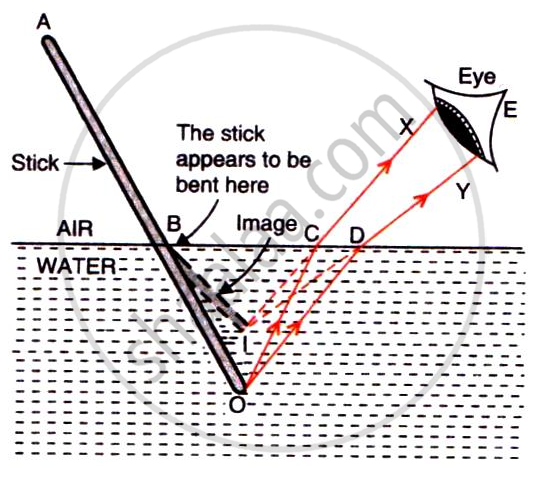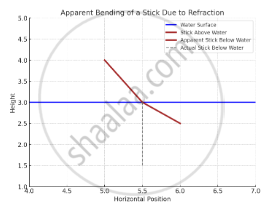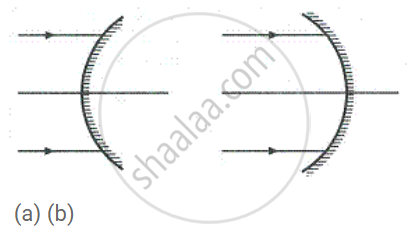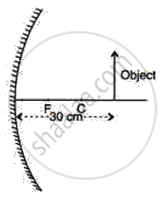Advertisements
Advertisements
प्रश्न
A straight stick partly dipped in water obliquely, appears to be bent at the surface of water.
उत्तर १
The phenomenon is due to refraction of light.
A ray of light OC coming from O passes from water into air and gets refracted away from normal (along CX). Another ray OD gets refracted along DY. The two refracted rays CX and DY, when produced backwards, appear to meet at the point I. Thus, I is the virtual image of the end O of the stick. So, the stick appears to be bent as shown below.

उत्तर २
- Light Refraction: When light passes from one medium (e.g., water) to another (e.g., air), it changes speed and direction. Light rays traveling from the submerged part of the stick (in water) to the observer’s eyes (in air) bend away from the normal at the water's surface.
- Apparent Bending: Due to this bending of light, the part of the stick underwater appears shifted upward. As a result, the stick seems bent at the surface of the water, even though it is straight.

APPEARS IN
संबंधित प्रश्न
A 4 cm tall object is placed on the principal axis of a convex lens. The distance of the object from the optical centre of the lens is 12 cm and its sharp image is formed at a distance of 24 cm from it on a screen on the other side of the lens. If the object is now moved a little away from the lens, in which way (towards the lens or away from the lens) will he have to move the screen to get a sharp image of the object on it again? How will the magnification of the image be affected?
Explain the following term related to spherical lenses:- principal focus
In each case (a) and (b), draw reflected rays for the given incident rays and mark focus by the symbol F.

(a) When a concave mirror is used as a shaving mirror, where is the person's face in relation to the focus of mirror?
(b) State three characteristics of the image seen in part (a).
Select the correct option:
Looking into a mirror one finds her image diminished, the mirror is:
An object is placed in front of a concave mirror as shown in the following figure. By scale drawing, find the nature of the image. Given f = 10 cm, v = 30 cm.

If the real image of a candle flame formed by a lens is three times the size of the flame and the distance between lens and image is 80 cm, at what distance should the candle be placed from the lens?
The radius of curvature of a spherical mirror is 18 cm. What is the focal length of this mirror?
